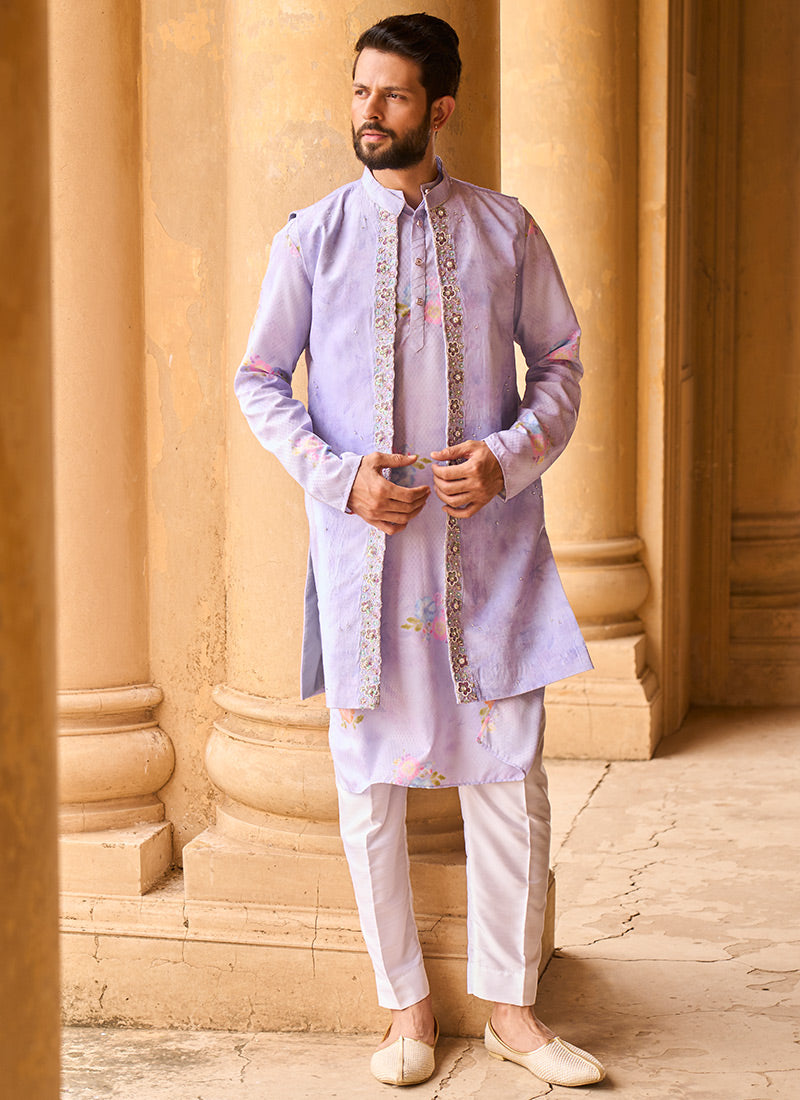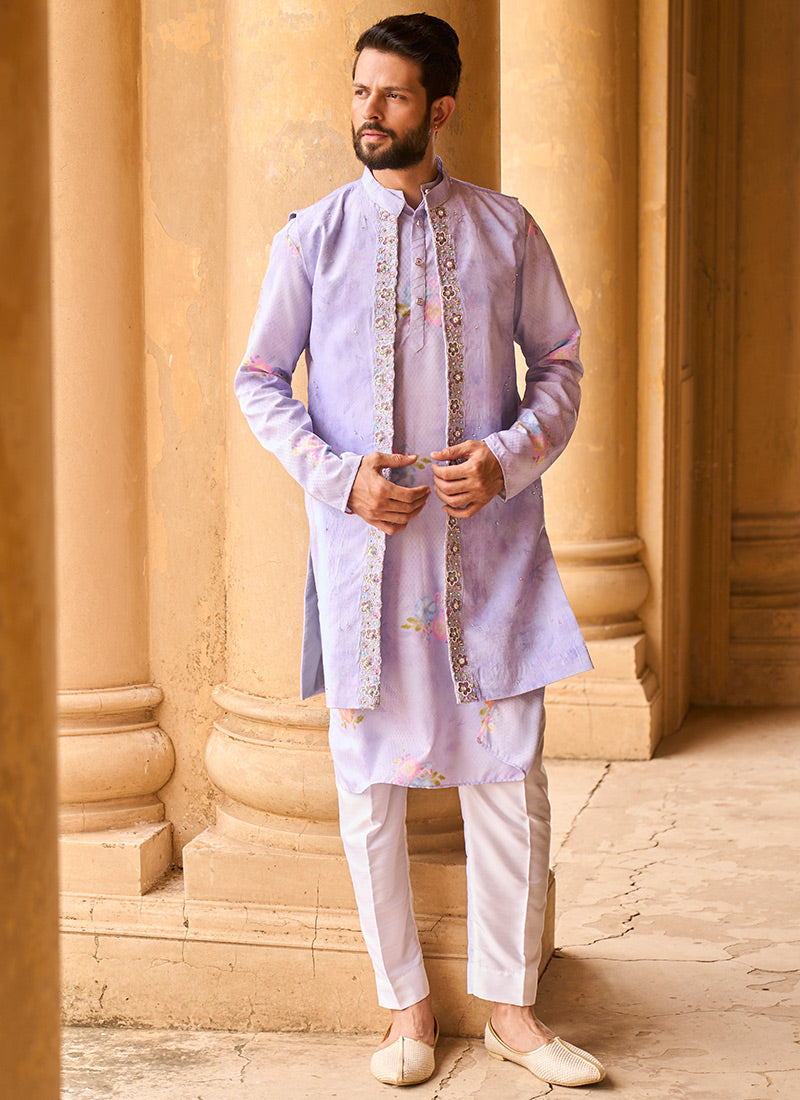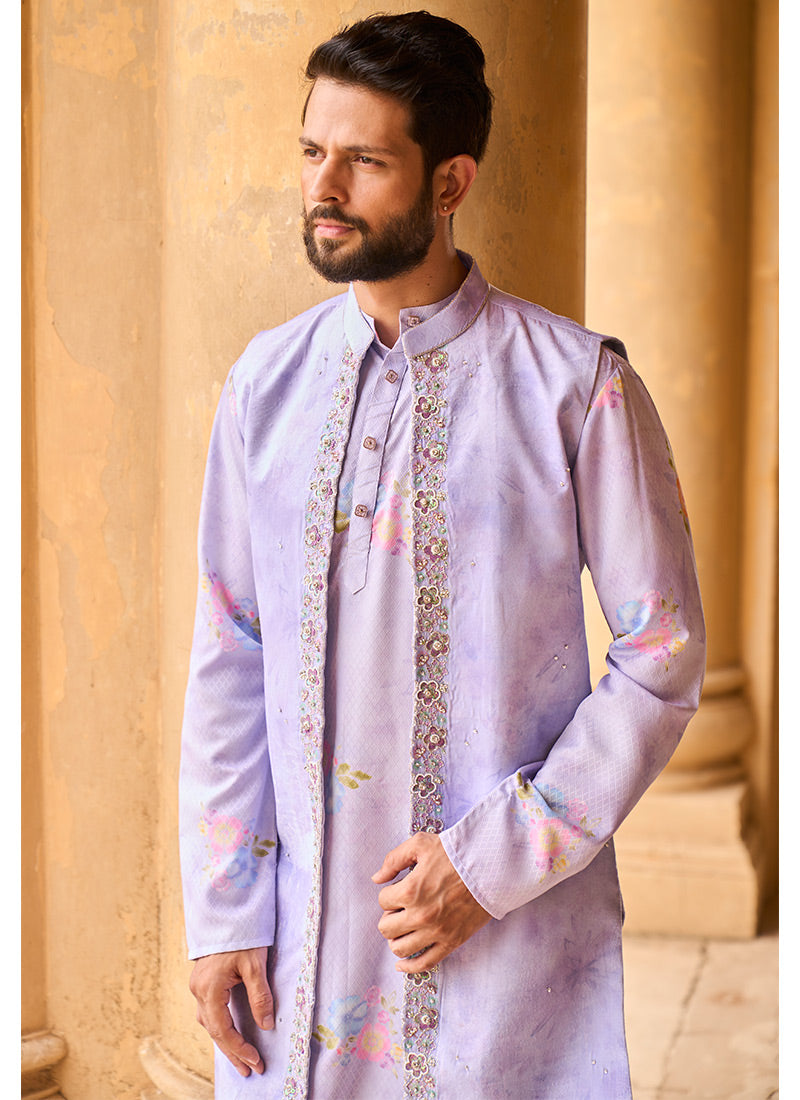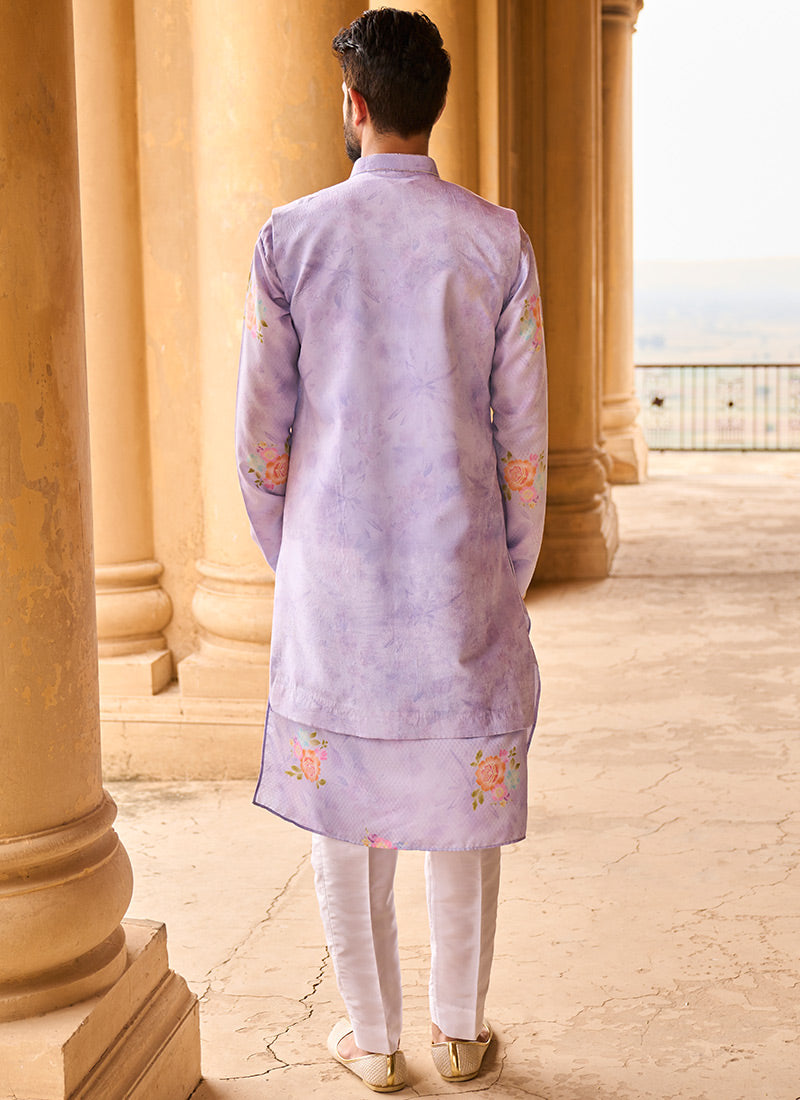Most pieces of traditional Indian clothing are immediately recognizable. Of these, few garments are as iconic or as enduring as the kurta. Worn for centuries across South Asia, the kurta has become a staple that’s as essential to Indian wardrobes as it is versatile. From everyday wear to ceremonial finery, it has evolved to suit every occasion and style preference. Today, it exists in countless fabrics, colors, and cuts, each with its own charm.
Let’s take a closer look at what defines a traditional kurta, how it differs from the kurti, what fabrics are most commonly used, and how some of our latest velvet Jodhpuri sets redefine luxury kurta fashion.
What Is a Kurta?
The kurta is traditionally a loose-fitting tunic that falls anywhere from mid-thigh to just below the knee. Initially a male garment, it has since been embraced by people of all genders and continues to be a central piece in both traditional and modern Indian wardrobes.
True to its name, which translates to “collarless shirt,” it typically lacks a collar. It's designed for comfort and ease of movement, featuring long sleeves and a straight silhouette. Whether made in simple cotton for daily wear or in ornate fabrics for formal events, the kurta’s enduring popularity lies in its timeless shape and adaptability.
Kurta vs. the Kurti: What’s the Difference?
While the kurta is a long tunic worn by both men and women, the kurti is often shorter and more tailored, typically worn by women. The difference between a kurta and kurtis lies in length and fit, although the lines are increasingly blurred with contemporary styling.
A kurti may stop at the hips or thighs, whereas a kurta tends to be longer. Despite their differences, both garments celebrate ease and versatility, forming a crucial part of Indian ethnic wear.
What Are the Best Materials for a Kurta?

Fabric is what gives a kurta its feel, flow, and occasion-specific relevance. Traditional kurtas are usually made with pure fabrics rather than blends, creating a more authentic texture and drape. There are many different materials used for a kurta.
Generally, and traditionally, kurtas are made of a singular fabric type. Thus, pure fabrics are more common than highly blended ones. There's no single perfect kurta fabric since each has its own benefits and drawbacks. Some of the classic kurta fabrics include:
Cotton Kurtas
Cotton is one of the most highly utilized fabrics in the entire world for several reasons. The fabric is lightweight, breathable, and can be woven into any number of textiles to great effect.
Kurtas made from cotton will likely be visibly matte, lightweight, and perfect for the summer. They are wonderful for daily use or as a piece to pair underneath formalwear.
Rayon Kurtas
The kurta has been around for countless centuries. Given this, it should be no surprise that rayon is the only synthetic fabric to make the kurta fabric list.
Compared to natural fabrics, rayon comes the closest to resembling silk. It is lightweight, does not retain heat, and has a subtle luster that can enhance any outfit when worn.
Silk Kurtas
Silk is arguably the gold standard when it comes to historical luxury fabrics. In the global silk industry, the dominant producers are India and China.
Silk takes dye well, allowing for rich designs and color. It is lightweight and subtly elastic. Silk has a smoothness and shine, making it immediately recognizable.
This fabric is also fast-drying, which is excellent for washing (but keep in mind that silk often must be hand-washed).
Satin Kurtas
Satin technically refers to the weave of the fabric rather than the textile itself. Traditional satin is made from silk and has a glossy shine to match.
The fabric is exceptionally strong, thanks to the nature of the weave. Satin garments can be tricky to construct, which is why this material usually appears in professionally made pieces.
How To Choose the Best Kurta for You

Some details influencing your choice of fabric are purely personal. Some may prefer the sleekness of satin, while others would rather have the breathability of cotton. Regardless, we're going to highlight a few kurtas of multiple fabrics below.
Join us as we showcase the best that every fabric has to offer:
Silk Kurta Options
We can't finish this guide without highlighting one of the most significant types of fabric to grace Indian fashion. Silk has long been one of the most lauded materials for any garment, not just kurtas.
Lashkaraa's Black and Pink Embroidered Sherwani Set includes a silk jacket, a silk kurta with santoon inner, and a silk bottom. Embroidery is present on this style using zari and thread work.
Velvet Kurta Styles
Velvet kurtas are where tradition meets opulence. Ideal for cooler months and formal occasions, they provide warmth and grandeur in equal measure. The collection showcases velvet like never before with hand-embroidery and contemporary hues.
The Light Pink Hand Embroidered Velvet Jodhpuri Set is a vision of refined elegance. Soft yet impactful, this set combines a pastel tone with intricate threadwork, creating an outfit that’s perfect for daytime weddings or high-end festivities. The gentle sheen of the velvet adds a layer of richness without overpowering the look, making it ideal for those who appreciate subtlety with a touch of royalty.
Next, the Soft Mint Hand Embroidered Velvet Jodhpuri Set stands out with its cool, refreshing color and finely detailed embellishments. This look is tailored for those who want to stand apart in a crowd without being loud. It’s especially fitting for pre-wedding functions like mehendi or engagement ceremonies, where fashion meets celebration.
Rayon Kurta Styles
When rayon first emerged in the late 1800s, it was known as artificial silk. Some believe the term “rayon” is derived from the French word “rayon,” which means “ray of light.” With a quick glance at rayon kurtas, it’s easy to see just how appropriate that name is.
The gloss of rayon infuses primary colors with a differing degree of richness, contrasting fabrics and tonally different garments provide a window into a more complex, modern kurta.
Our Yellow Printed Nehru Jacket and Drape Style Kurta Set features mixed fabrics. Starting with a silk printed Nehru jacket alongside a rayon top and silk bottoms. Like all of our pieces, this piece is made in India and checked by hand to ensure high quality.
The Perfect Kurta
The kurta is a fashion and cultural staple. It can be worn to bed, work, and social gatherings. Kurtas are popular in men's ethnic wear at weddings, depending on the design. With unmatched comfort and ease of wear, it's no wonder that it has become a generation-defining garment.
Even then, it still evolves. Two hundred years ago, we would not have had rayon kurtas. There is no telling what the next step is until it happens. At Lashkaraa, we aspire to be that next step.

Sources:









